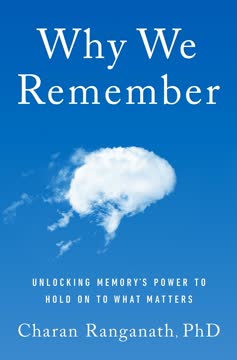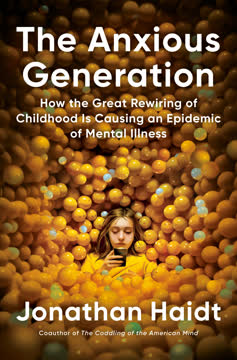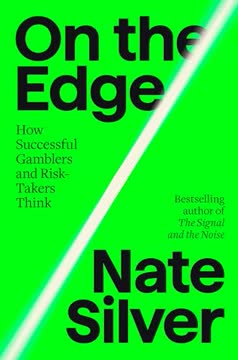Key Takeaways
1. Parenting is not about shaping children, but providing a nurturing environment
Being a parent is like making a garden. It's about providing a rich, stable, safe environment that allows many different kinds of flowers to bloom.
Gardening metaphor. The author challenges the conventional "parenting" model, which treats raising children as a goal-directed task aimed at producing a specific outcome. Instead, she proposes a gardening metaphor:
- Parents are gardeners, not carpenters
- Children are diverse plants, not raw materials to be shaped
- The goal is to create fertile soil and a nurturing environment
- Allow for natural growth, variability, and unpredictability
This approach recognizes that children are unique individuals with their own potential. The parent's role is to provide love, safety, and stability, allowing children to explore and develop in their own ways.
2. Human evolution favors variability and adaptability in children
Variability and exploration are at their height during childhood.
Evolutionary advantage. Human evolution has favored a long childhood characterized by variability and adaptability. This provides several benefits:
- Allows for exploration of different possibilities
- Enhances ability to adapt to changing environments
- Increases chances of survival for the species as a whole
Children's brains are more plastic and open to learning than adult brains. This plasticity enables them to:
- Acquire language rapidly
- Develop new skills
- Adapt to various cultural contexts
The author argues that this variability, often seen as a challenge in modern educational settings, is actually a crucial evolutionary advantage that should be embraced and nurtured.
3. Love for children is biologically rooted and extends beyond biological parents
We don't care for children because we love them; we love them because we care for them.
Expanded caregiving. Human evolution has developed a unique "triple threat" of caregiving:
- Pair-bonding: Long-term partnerships for child-rearing
- Grandparenting: Post-menopausal females contributing to care
- Alloparenting: Care from non-biological parents within the community
This expanded caregiving system is biologically rooted but extends beyond genetic relatedness. The act of caring itself generates love and attachment, which explains why adoptive parents, stepparents, and other caregivers can form deep bonds with children.
The author emphasizes that this love is not just a means to an end (producing successful adults) but is valuable in itself, creating meaningful human relationships and experiences.
4. Children learn through observation, imitation, and active exploration
Even very young children are remarkably sensitive to these details and learn extensively from what people say.
Multiple learning mechanisms. Children are active learners who use various strategies to understand the world:
-
Observation and imitation:
- Learning from adults' actions and words
- Imitating not just actions, but intentions and goals
-
Active exploration:
- Conducting "experiments" through play
- Testing hypotheses about how things work
-
Questioning and explanation-seeking:
- Asking "why" questions
- Seeking causal explanations for phenomena
The author highlights that children are not passive recipients of information but engage in sophisticated learning processes from a very young age. This understanding should inform how we interact with and educate children, emphasizing the importance of providing rich, varied experiences and opportunities for exploration.
5. Play is crucial for children's development and learning
Play isn't about directly achieving goals, but it's what allows children to achieve their goals in the long run.
Power of play. The author emphasizes the critical role of play in children's development:
- Allows for exploration of possibilities without immediate consequences
- Develops social skills, particularly through rough-and-tumble play
- Enhances creativity and problem-solving abilities
- Supports cognitive development and learning
Types of play and their benefits:
- Physical play: Develops motor skills and spatial awareness
- Pretend play: Enhances understanding of others' minds and social roles
- Exploratory play: Promotes scientific thinking and causal understanding
The author argues that the seemingly purposeless nature of play is precisely what makes it so valuable, allowing children to develop skills and understanding that will serve them in unpredictable future situations.
6. Adolescence is a period of both vulnerability and opportunity
Adolescence sees a revival of the kind of neural flexibility and plasticity that is such a feature of preschool children.
Dual systems. The author describes adolescence as characterized by two interacting systems:
-
Emotional/motivational system:
- Heightened sensitivity to rewards
- Increased risk-taking and sensation-seeking
-
Control system:
- Develops more slowly
- Responsible for planning, inhibition, and decision-making
This mismatch creates both challenges and opportunities:
- Vulnerability to risky behaviors
- Potential for creativity and innovation
- Openness to new experiences and learning
The author suggests that society should provide structured opportunities for adolescents to exercise their growing independence and decision-making skills in safe contexts, rather than simply trying to restrict their behavior.
7. Technology shapes each generation, but core human needs remain constant
Our digital grandchildren will view a master reader with the same nostalgic awe that we now accord to a master hunter or an even more masterly mother of six.
Generational shifts. Each generation grows up with new technologies that shape their experiences and skills:
- Print literacy in previous generations
- Digital literacy in current and future generations
However, the author argues that core human needs and developmental processes remain constant:
- Need for love and attachment
- Importance of play and exploration
- Value of social connections
The challenge is to adapt our understanding of child development to new technological contexts while recognizing the enduring aspects of human nature and needs.
8. The value of children goes beyond measurable outcomes
Caring for children is a good thing in itself, not just because it may lead to other good things in the future.
Intrinsic value. The author challenges the idea that the value of children and child-rearing can be measured solely by outcomes:
- Children are not just future adults to be shaped
- The experience of caring for children has inherent worth
- Relationships between children and caregivers are uniquely valuable
This perspective has implications for:
- Personal decisions about having children
- Social policies supporting families and caregivers
- How we value and invest in childhood as a society
The author argues for recognizing the profound and irreducible value of children and childhood, beyond any measurable future outcomes or societal benefits.
Last updated:
FAQ
What's The Gardener and the Carpenter about?
- Exploring Parenting Models: The book contrasts the "gardener" approach, which nurtures a child's natural development, with the "carpenter" approach, which aims to shape children into specific outcomes.
- Child Development Insights: Gopnik uses research in child psychology and neuroscience to explain how children learn best through play, exploration, and social interaction.
- Evolutionary Perspective: The book discusses how human evolution has shaped childhood, emphasizing the importance of a long developmental period for acquiring complex skills.
Why should I read The Gardener and the Carpenter?
- Challenging Conventional Wisdom: Gopnik encourages readers to rethink traditional parenting practices that focus on strict discipline and achievement.
- Scientific Backing: The book provides evidence-based insights from developmental psychology to help parents make informed decisions.
- Broader Implications: It addresses societal and political aspects of child-rearing, making it relevant for those interested in education and community welfare.
What are the key takeaways of The Gardener and the Carpenter?
- Parenting as Love, Not Work: Gopnik argues that parenting should be about forming loving relationships rather than achieving specific outcomes.
- Importance of Play: Play is essential for learning and development, allowing children to explore and innovate.
- Diversity in Caregiving: The book highlights the role of various caregivers, including grandparents and community members, in a child's development.
What are the best quotes from The Gardener and the Carpenter and what do they mean?
- “Our job is not to shape our children’s minds; it’s to let those minds explore all the possibilities that the world allows.” This emphasizes providing a nurturing environment rather than controlling outcomes.
- “Caring for children is like tending a garden.” This metaphor suggests creating a supportive space for growth rather than forcing a predetermined shape.
- “Love’s purpose is not to shape our beloved’s destiny, but to help them shape their own.” It highlights the importance of allowing children to find their own paths.
How does Alison Gopnik define the difference between "parenting" and "being a parent"?
- Parenting as a Verb: Gopnik critiques "parenting" as a goal-directed activity focused on outcomes, which can lead to anxiety and guilt.
- Being a Parent as a Relationship: She emphasizes forming a deep, loving relationship with a child, allowing for growth and exploration.
- Focus on Love: The emphasis is on nurturing and supporting children rather than trying to mold them into a specific type of adult.
What role does play have in child development according to The Gardener and the Carpenter?
- Essential for Learning: Play allows children to experiment and explore without pressure, fostering learning.
- Variety of Play Types: Different types of play contribute to various aspects of development, including social skills and creativity.
- Play as a Natural Process: It should not be overly structured or directed by adults, as this can hinder natural learning processes.
How does Gopnik address the concept of "overparenting" in The Gardener and the Carpenter?
- Critique of Helicopter Parenting: Gopnik discusses the pressure to control every aspect of a child's life, leading to anxiety.
- Encouraging Independence: She advocates for allowing children to explore and take risks, fostering resilience and adaptability.
- Long-term Effects: Overparenting can lead to children who are less capable of handling challenges on their own.
What does Gopnik mean by "the parenting model" and why is it flawed?
- Goal-oriented Approach: The parenting model focuses on achieving specific outcomes, like academic success, which can be misguided.
- Misunderstanding Child Development: This model does not align with how children naturally learn and grow, which involves exploration.
- Negative Impact on Relationships: The pressure to conform to this model can strain parent-child relationships, leading to guilt and anxiety.
How does The Gardener and the Carpenter relate to societal and political issues?
- Child Welfare as a Community Issue: Gopnik emphasizes that caring for children is a communal responsibility, not just that of biological parents.
- Policy Implications: Societal structures, like education and childcare, need to reflect a holistic understanding of child development.
- Advocacy for Change: Gopnik calls for reforms that support families and children, arguing for societal investment in child welfare.
How does Gopnik relate childhood to evolutionary biology?
- Extended Childhood: The long developmental period allows for acquiring complex social and cognitive skills, unique to humans.
- Cultural Transmission: Children actively engage in learning from the previous generation, vital for cultural continuity.
- Adaptability: The flexibility and adaptability of children are evolutionary advantages, enabling humans to thrive in diverse environments.
What does Gopnik say about the importance of caregiver relationships?
- Secure Attachments: Secure attachments with caregivers are crucial for emotional and social development.
- Role of Alloparents: Extended family and community members contribute to child-rearing, enriching children's experiences.
- Impact on Learning: Positive caregiver relationships enhance learning opportunities, fostering resilience and adaptability.
How can parents apply the insights from The Gardener and the Carpenter in their daily lives?
- Foster a Nurturing Environment: Focus on creating a safe and loving space for children to explore and learn.
- Encourage Play and Exploration: Allow children to engage in unstructured play, essential for development and creativity.
- Shift Focus from Outcomes to Relationships: Prioritize building strong, loving relationships over specific achievements.
Review Summary
The Gardener and the Carpenter receives mixed reviews. Some praise its insightful exploration of child development and parenting philosophy, appreciating Gopnik's scientific approach and personal anecdotes. Others find it meandering and repetitive, wishing for a more concise presentation. The book's central metaphor of parents as gardeners rather than carpenters resonates with many readers. Critics note the academic writing style and potential class bias. Overall, reviewers value the book's message about allowing children to develop naturally, even if they disagree with its execution.
Similar Books






Download PDF
Download EPUB
.epub digital book format is ideal for reading ebooks on phones, tablets, and e-readers.





